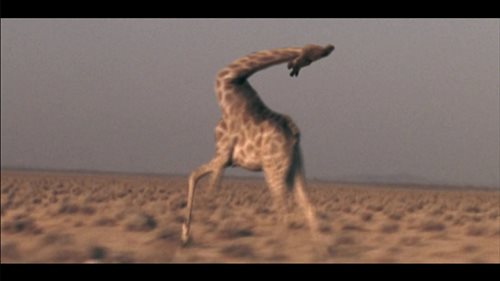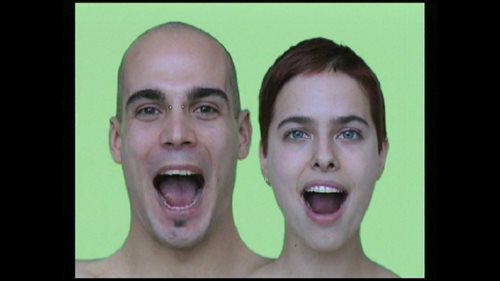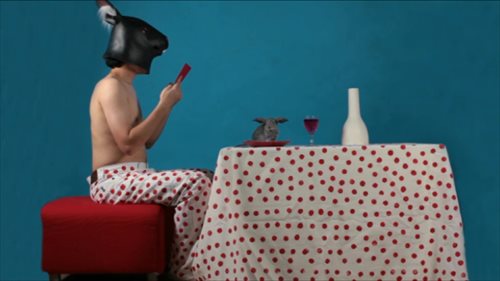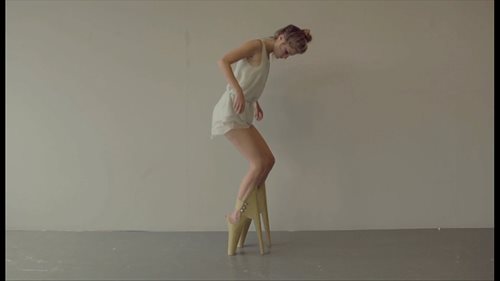Just a minute
Film project has people expressing themselves in only 60 seconds
Over a century ago, the Lumière brothers shot the world's first motion picture, Workers Leaving the Lumière Factory. Due to the technological limitations of the time, the film had a running time of under a minute.
For the past 15 years, young video artists have been encouraged to express themselves in a similarly brief amount of time as part of a project entitled The One Minutes. A retrospective exhibition of entrants, The One Minutes on Tour, is being held in Shanghai.
As the project's name suggests, the videos are exactly one minute long, including credits. The project started as a local TV program in Amsterdam in 1999 when Jos Houweling, then director of the Sandberg Institute art school, was asked if he could fill an hour of airtime between midnight and 1 am. Houweling offered the time slot to his students Katja van Stiphout and Michal Buttink, who then invited some friends to make one-minute films.

Screenshots of video works from The One Minutes on Tour exhibition

Screenshots of video works from The One Minutes on Tour exhibition

Screenshots of video works from The One Minutes on Tour exhibition

Screenshots of video works from The One Minutes on Tour exhibition

A screenshot of Scary Beautiful by Leanie van der Vyver Photos: Courtesy of Jiang Hongqing
"A brilliant new format was born," said Julia van Mourik, director of The One Minutes. "Within the inexorable limit of 60 seconds, it turned out anything was possible. The one hour at midnight rapidly grew into a worldwide platform. Sister organizations arose, while television channels, art organizations and film festivals all adopted segments of The One Minutes and gave them their own interpretation."
One Minutes Junior is a worldwide competition held every year. Participants are asked to share their own perspectives on life in one-minute videos to elicit resonance and reflection in the audience.
"Artists are free to express whatever they want. One minute is a nice length to grab one's attention and fits in well with fast-paced modern life, as we all hope to obtain as much information as possible within the shortest time," said Jiang Hongqing, curator of the exhibition. "An artist has to be very concise about what he/she wants to say in order to attract the audience within seconds."
To date, over 10,000 video works from artists of 120 different nationalities have been produced for the platform.
The exhibition falls into three parts. The first is an interactive installation at the entrance where visitors can film a one-minute portrait of themselves. The second has 11 screens showing over 300 of the best work made for the project over the years. The last shows the 15 years' history of the project via photos, booklets and videos.
There's also a series of videos providing handy tips for everyday life, such as how to separate egg yolks and whites, how to make linseed oil, and how to improve your life.
In The City One Minutes Rome series, artists Natasja Boezem and Frank Stassar created a unique portrait of Rome by filming pedestrians in the city reading aloud ancient Roman poetry.
A video called Time, by Chinese student Guo Jingjing, shows a girl sitting in front of a flickering TV screen. The girl gradually grows into a silvery-haired old woman with the passage of time.
"What could possibly happen in one minute? I thought it was too short to accomplish anything at first but after watching the videos, I came to realize that so many things can be achieved in seconds," a visitor told the Global Times.
The One Minutes covers a wide variety of themes. As Mourik said, "only when I saw a number of the videos in succession did I really start to comprehend the power of the project. The sheer variety of the films, on every possible level, makes watching them in sequence an overwhelming experience. It opens you up to the diversity of the work and makes you long for even more: more variation, more surprise and more amazement. It makes you look differently, look again, really look. That is what makes The One Minutes so compelling."
The project was introduced to China in 2008. According to Wei Shaonong, exhibition director and dean of the School of Design of East China Normal University, The One Minutes has great value in fostering and training young talent. In 2011, it became a fixture at the annual Shanghai International TV Festival.
"The One Minutes has built a bridge of exchange and communication between young Chinese and international artists. The influence it had has gone far beyond our expectations," Wei said.
Dutch art critic Tineke Reijnders said, "art crossing all boundaries is a 'bon mot' that is only rarely true. The One Minutes is truly democratic as the only initiative in the Netherlands that does not exclude any region. It challenges artists all over the world to participate. It has its own rules of the game creating a framework for absolute and exuberant freedom."
Opening hours: Until Friday, 9 am to 5 pm (closed Monday, last admission at 4 pm)
Venue: Power Station of Art
上海当代艺术博物馆
Address: 5/F, 200 Huayuangang Road
花园港路200号5楼
Admission: Free
Call 3110-8550 for details